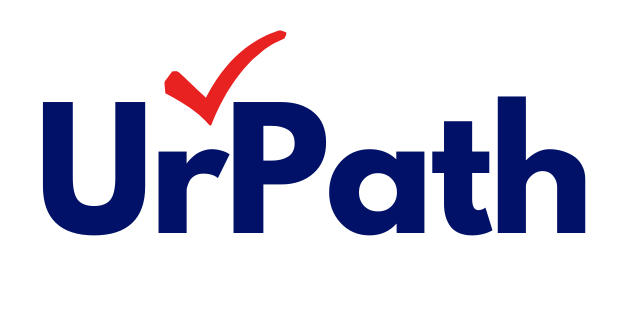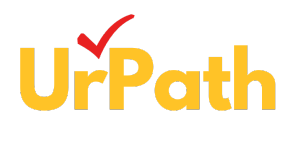The Critical Need for AI Integration in Higher Education: A Deep Dive into the Future of Learning
Hayoung Kim • September 30, 2024
Book Your Free Initial Consultation Today
AI Integration: A Game Changer for Higher Education Institutions
As we move deeper into the 21st century, the pressures on higher education institutions to innovate and adapt have reached unprecedented levels. With rapid advancements in technology, particularly artificial intelligence (AI), these institutions must embrace new tools to remain competitive, ensure student success, and stay relevant in an ever-evolving job market. This article examines why AI integration is critical for higher education, the tangible benefits of adopting AI-driven technologies, and how various tools are revolutionizing student success and job readiness.
AI Integration: A Game Changer for Higher Education Institutions
1. Transforming Institutional Operations Through AI
AI technologies can streamline operations within higher education institutions by automating repetitive tasks, analyzing vast data sets, and optimizing resources. Tools powered by AI can manage everything from student enrollment processes to financial aid distributions, freeing up administrative staff to focus on more complex tasks. AI algorithms can predict patterns in student behavior, helping institutions allocate resources more effectively to address potential challenges, such as high dropout rates or academic underperformance.
For instance, AI-powered predictive analytics can forecast when a student is at risk of dropping out based on behavioral patterns, attendance, and academic performance. Early intervention strategies, tailored specifically to each student's needs, can then be implemented. By enhancing institutional efficiency, AI ensures that education providers can focus more on delivering high-quality teaching and less on logistical burdens.
2. Revolutionizing Teaching and Learning Methods
AI’s ability to personalize learning environments is perhaps its most transformative contribution. Traditionally, higher education has relied on a "one-size-fits-all" approach, with standardized curricula and teaching methods. However, AI can enable individualized learning plans for students by assessing each student’s strengths, weaknesses, and preferred learning methods. AI-powered platforms can adjust coursework in real time, ensuring students are constantly challenged but not overwhelmed.
For example, AI-driven tutoring systems can adapt learning content based on a student’s progress, offering additional resources or alternative explanations for difficult concepts. Moreover, AI can assist faculty by automating grading processes and assessing student performance more effectively. This allows educators to focus on teaching and mentoring, creating a more supportive and enriched learning environment.
3. Data-Driven Decision-Making for Institutional Success
Higher education institutions generate massive amounts of data daily. However, without the ability to analyze and make sense of this data, much of its value is lost. AI can help institutions sift through these data sets, uncovering patterns and trends that would otherwise go unnoticed. AI algorithms can provide insights on how students engage with various academic programs, identify which programs are in demand, and highlight where resources should be invested.
With these insights, decision-makers can fine-tune their academic offerings, ensuring that they remain relevant to the needs of students and the workforce. By leveraging AI’s data analytics capabilities, institutions can future-proof themselves, adapting swiftly to changes in student demand, technological advancements, and labor market needs.
4. Maximizing Students' Return on Investment (ROI) Through Career Success
A significant concern for students is ensuring that their education translates into meaningful employment opportunities. AI is now playing a crucial role in supporting students with job applications, helping them stand out in a highly competitive job market. By analyzing job descriptions, optimizing resumes, and matching students with relevant positions, AI-driven tools are streamlining the path from education to employment.
Many tools assist students in the job application process by providing personalized skill assessments and optimizing application materials tailored to specific job roles. These platforms help students effectively highlight their strengths and qualifications, increasing their chances of securing employment. As a result, higher education institutions benefit by supporting their graduates in maximizing the ROI on their tuition investment. Institutions that integrate such tools into their career services will not only enhance student satisfaction but also improve their overall employment statistics, strengthening their reputation in the competitive education landscape. If you're interested in learning more about how these tools can benefit your institution, please feel free to reach out to us.
Surviving and Thriving in the 21st Century: AI as a Competitive Differentiator
1. The Need to Innovate in a Global Education Market
The higher education landscape is more competitive than ever before. Institutions face competition not only from other universities but also from alternative learning platforms such as coding boot camps and online education providers. To remain attractive to prospective students, institutions must offer more than just traditional degree programs—they must also provide cutting-edge, AI-driven learning experiences.
AI can differentiate institutions by offering AI-powered degree programs, innovative teaching methods, and personalized career counseling services. By integrating AI into their infrastructure, institutions position themselves as leaders in innovation, attracting students who value technological proficiency as part of their education.
2. Addressing the Global Demand for Talent
The job market is undergoing a significant shift, with automation and AI technologies reshaping industries. The skills required to thrive in this market are constantly evolving. Institutions that incorporate AI into their curricula are better equipped to prepare students for future job roles, many of which have yet to be defined. This proactive approach ensures that graduates are not only prepared for the current job market but are also equipped with the adaptive learning skills required for lifelong career success.
Preparing Students for an AI-Driven Workforce
1. Teaching the Skills of Tomorrow
The integration of AI into higher education doesn’t stop at institutional operations. Students must also learn to navigate and work alongside AI technologies in their future careers. As AI reshapes industries from healthcare to finance, the demand for professionals who understand how to leverage AI tools will continue to grow. Institutions that teach students AI literacy—from data analysis to machine learning—ensure their graduates remain competitive in a technology-driven workforce.
2. Building Critical Thinking and Adaptability
While AI will automate many tasks, soft skills such as creativity, problem-solving, and critical thinking will become even more valuable in the workforce. Institutions must strike a balance by teaching students how to use AI technologies while also fostering the human skills that AI cannot replicate. By doing so, they prepare students for a future in which human-AI collaboration is the norm.
3. Lifelong Learning and Professional Growth
The integration of AI into higher education ensures that students are prepared not just for their first job, but for a lifetime of career growth. AI-powered platforms provide continuous learning opportunities and career support, enabling students to stay competitive in a rapidly evolving job market. As new technologies emerge, AI systems can guide graduates toward acquiring the necessary skills and certifications to remain relevant in their chosen fields.
Conclusion: AI is the Future of Higher Education
The integration of AI into higher education is no longer a futuristic ideal; it is a present-day necessity. Institutions that fail to embrace AI will find themselves falling behind in a world where technology drives everything from student success to institutional efficiency. AI offers unparalleled opportunities to streamline operations, personalize learning, and, most importantly, equip students with the skills and tools they need to thrive in an ever-changing job market.
AI-driven platforms are transforming the way students approach job applications, helping them maximize the value of their education by accelerating their path to meaningful employment. The future of education is AI-driven, and those who embrace this technology now will be the ones shaping that future for generations to come.
Got Any Questions?

Unlock the full potential of webinars as a versatile tool in your B2B marketing strategy. From showcasing your product to launching and discussing new eBooks or whitepapers, sharing thought leadership insights, and highlighting customer success stories, webinars offer endless opportunities. Whether you’re looking to drive brand awareness, engage your target audience, or generate qualified leads, this step-by-step guide—based on my extensive experience—will help you create impactful and effective webinars that deliver results.

A successful omnichannel strategy requires careful planning and continuous optimization. Here are the key steps: 1. Evaluate and Define Goals Start by setting clear objectives that align with the institution's overarching goals, such as increasing inquiries, boosting application numbers, or driving enrollments. From my experience working at Google’s Growth Lab, I learned the importance of identifying a North Star Metric— a single, most critical indicator that best represents the success of the product or offering. Establish supporting KPIs to track performance along the way, ensuring that all activities contribute to the North Star Metric. Setting quarterly OKRs (Objectives and Key Results) and measuring progress against them provides a focused direction for the strategy and enables continuous alignment with institutional objectives. 2. Conduct Market and Competitor Research To build a truly effective omnichannel strategy, it’s essential to conduct thorough market and competitor research that goes beyond examining similarly ranked institutions. Start by evaluating competitor strategies and analyzing student expectations to identify unique opportunities and differentiators. Competitor research should be approached holistically—your competitors are not only institutions with a similar ranking or academic focus but also those offering unique engagement strategies or programs that attract your target demographics, even if their core offerings differ. Look closely at the marketing channels, messaging, and engagement tactics other institutions are using, whether they share your academic profile or not. For example, a specialized art school might learn valuable lessons from the digital engagement strategies of a large research university, or a liberal arts college might find innovative recruitment approaches from vocational schools. This broader perspective on competitors helps reveal gaps, new trends, and untapped channels that can be adapted to fit your institution’s goals. By understanding what others are doing and refining your strategy based on these insights, you can better position your institution to stand out and capture the attention of prospective students. 3. Select the Right Channels As emphasized earlier, use data-driven insights to identify the most effective channels for reaching specific student segments, optimizing both engagement and ROI. By analyzing data on student preferences and behaviors, institutions can make informed decisions on where to invest marketing resources for maximum impact. For example, prospective undergraduate students often engage more with visually rich, interactive platforms like Instagram, TikTok, and YouTube, which allow for immersive storytelling. In contrast, graduate or executive education students may be more responsive to LinkedIn and email campaigns, where professional content, career outcomes, and academic rigor are emphasized. Selecting the right channels involves continually assessing which platforms generate the highest engagement and conversion rates among target audiences. Analyzing metrics such as click-through rates, time spent on content, and conversion paths across channels enables institutions to prioritize investments in high-performing platforms. This approach ensures each marketing dollar is allocated to channels that align best with each segment’s preferences, ultimately driving stronger engagement, more completed applications, and a higher return on investment. 4. Invest in Technology and Training Providing recruitment teams with advanced tools and proper training is crucial for a streamlined and effective recruitment process. Start by equipping them with CRM systems to manage relationships and track interactions with prospective students. These systems allow recruitment teams to capture valuable data, follow up efficiently, and maintain personalized communication with leads throughout their journey. Analytics platforms are another essential investment, offering insights into the effectiveness of campaigns, understanding student behaviors, and identifying the best channels for outreach. With data-driven insights, recruitment teams can make informed decisions, targeting the right students and optimizing their strategies over time. Marketing automation tools further enhance efficiency by automating repetitive tasks, such as sending emails, segmenting leads, and scheduling follow-ups. This frees up time for recruitment teams to focus on personalized outreach and engagement strategies that build stronger connections with prospective students. Equally important is training staff to use these technologies effectively. Ensuring they understand how to leverage each tool to its fullest potential will lead to seamless execution of campaigns, better data management, and ultimately, higher conversion rates. When teams are both well-equipped and well-trained, they can work more efficiently and effectively, enhancing the overall success of recruitment efforts. 5. Continuously Optimize To maximize the effectiveness of recruitment efforts, it’s essential to regularly evaluate and adjust campaign performance across all channels. Continuous optimization involves analyzing data from each channel—whether it’s email marketing, social media, search ads, or events—to understand what’s working and what isn’t. By regularly assessing metrics like engagement rates, conversion rates, and cost-per-lead, recruitment teams can identify trends, pinpoint areas for improvement, and make data-driven decisions. This iterative process is crucial for refining the messaging, channel selection, and targeting to ensure every interaction resonates with the intended audience. For example, if data shows that certain messages resonate more on social media than email, teams can adjust their approach by focusing on that channel for similar campaigns. Likewise, if one segment of the audience responds well to specific content, such as testimonials or career outcome data, this can guide future content strategies. Continuous optimization is especially critical for improving ROI and ensuring efficient use of the marketing budget. By analyzing which channels yield the best results for the lowest cost, recruitment teams can allocate more resources to high-performing channels while reducing spend on those that aren’t delivering. This approach prevents wasting marketing dollars on ineffective channels and strategies, instead focusing on areas that maximize return. Ultimately, continuous optimization ensures the omnichannel strategy remains relevant and aligned with evolving student behaviors, enabling the recruitment team to consistently reach their goals while maintaining a strong ROI. This disciplined approach not only keeps campaigns efficient but also sustains engagement, strengthens connections with prospective students, and maximizes the value of every marketing dollar spent.


